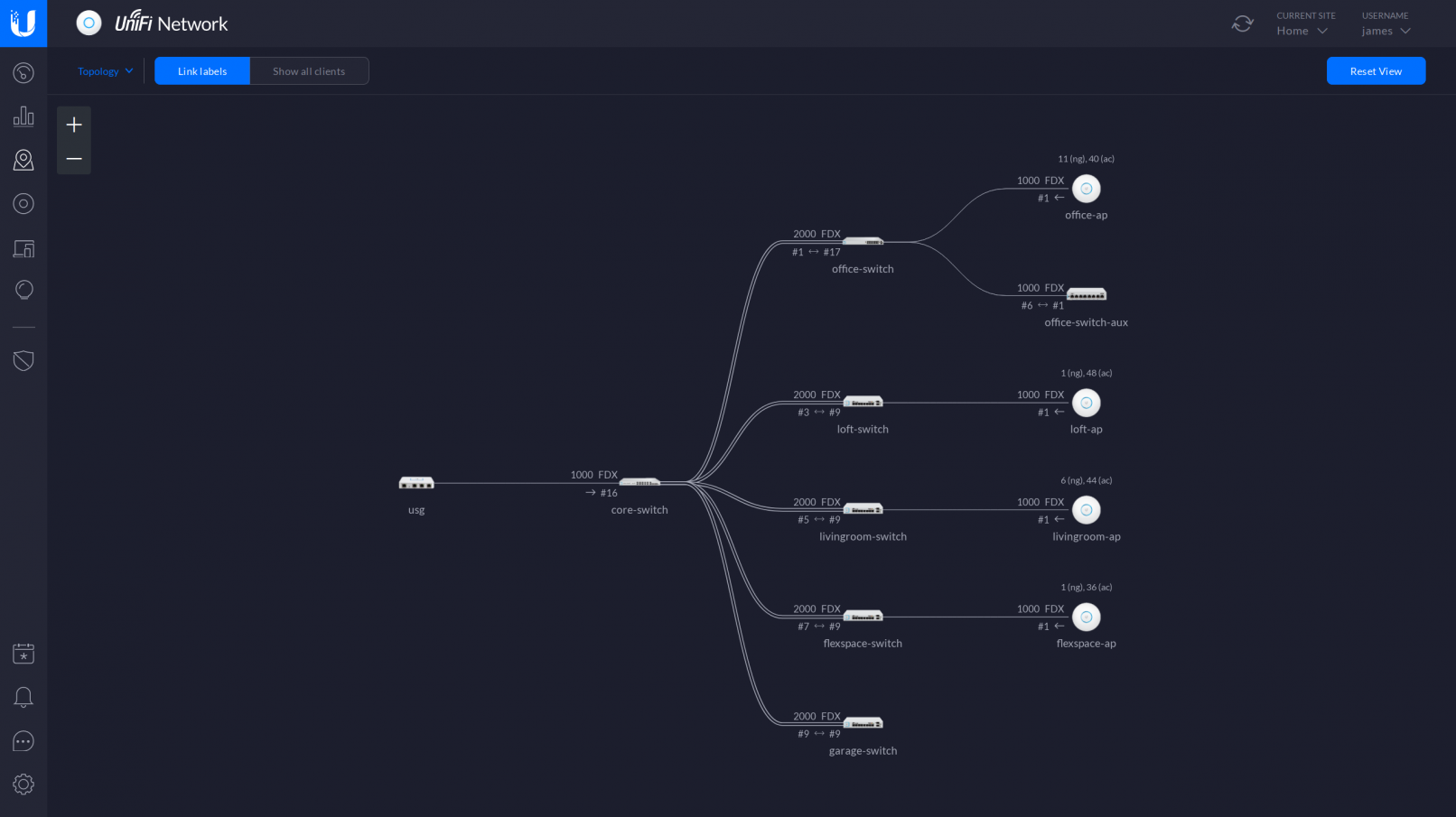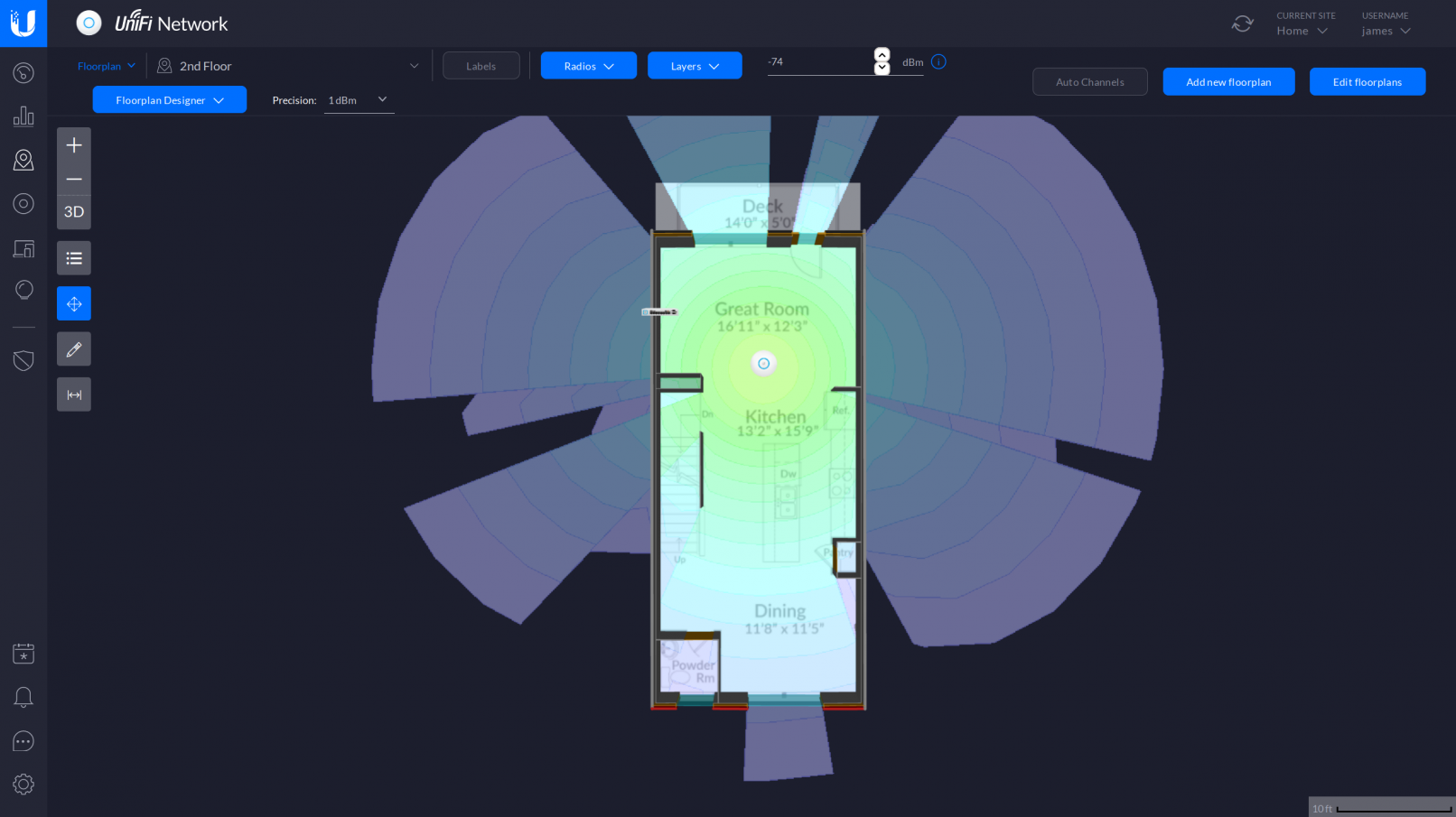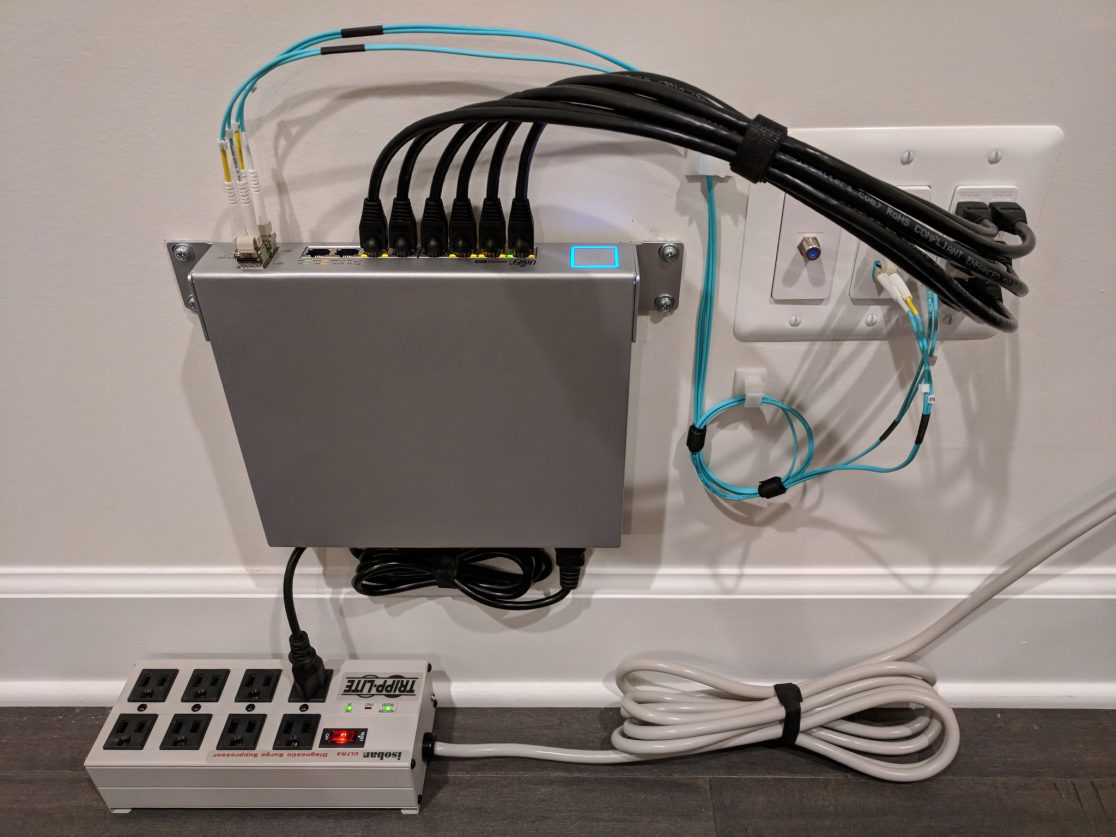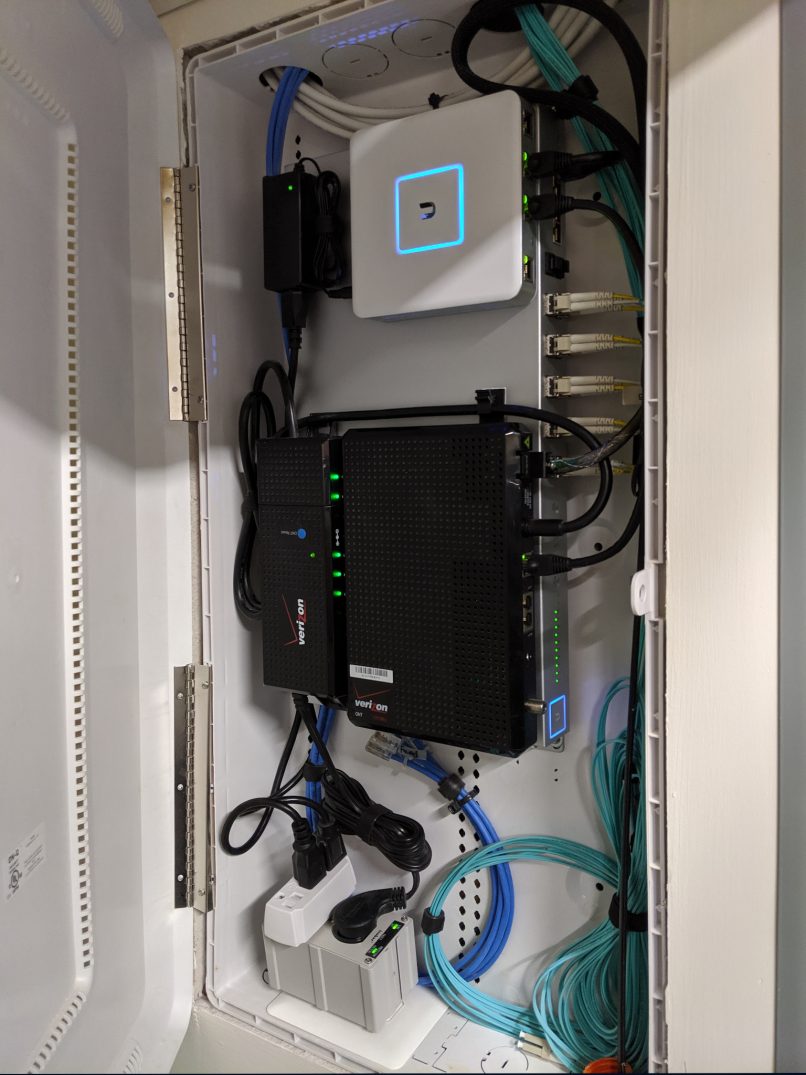UniFi
Business-class networking and security for my home
Growing up I would spend weeks installing Gentoo with a 28.8k modem. In that frustration I promised myself that I would always have the fastest, most flexible and robust home network I could. So when my partner and I bought our first house, one of the first things I did was cut a bunch of holes in the drywall and run 2,000 feet of fiber and Ethernet cable (with her blessing, of course).
Living in a dense neighborhood with congested Wi-Fi airspace, my goal was to establish smaller, more reliable wireless cells and fast wired access to devices in every room. I opted for a tree-based topology with fiber trunks to minimize home runs in this retrofit application while providing the capability to grow to 20 Gbps and beyond.
I’d like to think this network stands out for the way it is tailored to our home and network usage. Fixed devices like our security cameras are wired in leaving more airtime free for mobile devices; and through UniFi, we have an easy management platform for isolating guests and IoT devices to separate virtual networks.
UniFi software typically runs on a device you must purchase separately. Not content to spend the extra money for compute capacity I already have, I developed my own set of high quality Docker images for the UniFi controller and NVR. I’ve come to appreciate the way Docker lets me deploy a supported configuration on an unsupported operating system and it has quickly become my preferred way to compose complex services like Puppet.
I highlight this project because, to me, it represents the ultimate combination of tech and real-world handiwork. This project taught me so much about the way modern houses are built as I fished cable through the walls and ceilings. As for all those holes in the drywall? Well, let’s just say I’ve gotten pretty good with a taping knife and mud. Much respect to the drywall pros out there.



